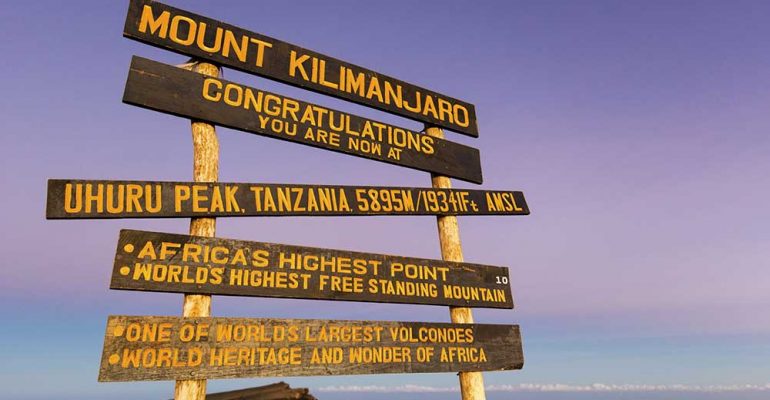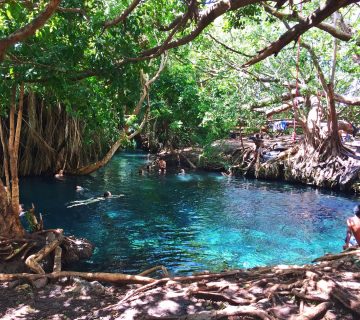


Route description:
Rongai is the only northern route up Kilimanjaro. It will take you past the second-highest point in Tanzania – Mawenzi while offering bird’s-eye views of the mountain’s rainforest. The gentle gradient and its gradual acclimatization bring one safely to the highest point of Africa – Kilimanjaro’s Uhuru peak, at 5,895 m. Rongai Route boasts high success rates of 84 and 94 percent on 6 and 7-day climbs, respectively. Rongai is great for travelers with previous exposure to high altitude and offers an escape from fellow-climbers, as it requires the longest drive before reaching the park gate. Rongai Route will leave you with great impressions while testing your strength over the distance of 65 km (40 miles).
Arrival: Airport to hotel
Transfer by our guide Kilimanjaro International Airport to your chosen hotel. All of the hotels we use offer comfort with rooms with hot showers, swimming pools, pleasant staff and Wi-Fi access. Your tour Manager will brief you on your forthcoming climb in the evening, answer your questions and make sure you are properly equipped for the climb, providing rental gear when necessary.
Day 1: Trekking from Nalemuru Gate to Simba Camp
You will meet your mountain guides and crew in the morning before setting out for Kilimanjaro National Park’s northern entrance: Nalemuru Gate (2,020 m). Here, the head guide will acquire the necessary permits and finalize search and rescue registration.
This day’s trek through coniferous forest of Kilimanjaro’s northern slope to Simba Camp is moderate, taking you up to 2,625 m. Remember not to hurry and maintain a comfortable pace. By the time you reach the camp, our professional mountain crew will have pitched your tents and started dinner preparations.
It is advisable to adhere to the following rules from the very beginning of your climb:
- Stay away from alcohol and caffeine.
- Make sure you drink a minimum of 4 liters of water every day, taking it frequently and in small doses.
- The use of Diamox tablets is a good idea as it staves off altitude sickness symptoms. These are taken in the morning before the day’s climb. Consult your family doctor to make sure that you can safely take it.
Do not be unduly alarmed if you experience discomfort during the night- high altitude has this effect on the human body. Nausea and headaches are a common occurrence in the mountains. However, make sure you alert your guide to any symptoms of altitude sickness.
Altitude gain: Nalemuru Gate (2,020 m) — Simba Camp (2,625 m)
Walking distance: 8 km
Duration: 3–4 hrs
Day 2: Trekking from Simba Camp to Second Cave Camp
Early in the morning after breakfast, the group will depart from Simba Camp to start trekking towards your second high altitude camp: Second Cave Camp (3,480 m). This route is rather easy and will only take around 3 hours, so when you reach the camp you will still have ample time to rest and explore the surrounding area. After lunch you will have a couple hours to rest, followed by an acclimatization hike in the direction of Kikilewa Camp (3,630 m) on a stretch of the Rongai Route at a short distance with a 100-meter gain in altitude, after which you will hike back down to Second Cave Camp.
NB: The acclimatization hike is an easy trek with a slight gain in altitude done in order to speed up the acclimatization process. You should take the acclimatization hikes very seriously. They help increase your chances of successfully summiting Kilimanjaro and save you from the consequences of altitude sickness.
Trekking from Simba Camp to Second Cave Camp:
Altitude gain: Simba Camp (2,625 m) — Second Cave Camp (3,480 m)
Walking distance: 4 km
Duration: 2–3 hrs
Acclimatization hike:
Altitude gain: Second Cave Camp (3,480 m) — Kikilewa Camp (3,580 m)
Walking distance: 2.5 km
Duration: 1–2 hrs
Day 3: Trekking from Second cave Camp to Kikilewa Camp
After breakfast you will begin trekking to Kikilewa Camp (3,630 m), where you can see Kibo Volcano at its finest (barring cloudy weather). This will be a relief day, so after lunch you will have time to sleep before the next trekking towards Mawenzi Tarn Camp. In the evening after dinner the guide will check health conditions of the each person of the group and give the necessary instructions for tomorrow’s trekking.
Altitude gain: Second Cave Camp (3,480 m) — Kikilewa Camp (3,630 m)
Walking distance: 5 km
Duration: 3–4 hrs
Day 4: Trekking from Kikilewa Camp to Mawenzi Tarn Camp
Early wakeup, breakfast and the start of trekking to Mawenzi Tarn Camp, which is situated at the foot of Mawenzi Volcano, Kilimanjaro’s second summit. When you reach the camp, you will have lunch and a two-hour rest, after which there will be an acclimatization hike towards Mawenzi Volcano with a 200-meter gain in altitude, followed by a hike back down to Mawenzi Tarn Camp, where you will have dinner in the evening.
Trekking from Kikilewa Camp to Mawenzi Tarn Camp:
Altitude gain: Kikilewa Camp (3,630 m) — Mawenzi Tarn Camp (4,310 m)
Walking distance: 6 km
Duration: 4–5 hrs
Acclimatization hike:
Altitude gain: Mawenzi Tarn Camp (4,310 m) — Mawenzi Volcano (4,510 m)
Walking distance: 2 km
Duration: 1–2 hrs
Day 5: Trekking from Mawenzi Tarn Camp to Kibo Camp
This day will be spent trekking towards Kibo Summit Camp (4,700 m). The landscape will change significantly to give way to a rocky semi-desert. The actual trekking is not very difficult; just remember to stick with an appropriate pace to keep up your strength for the trekking to Kilimanjaro’s summit. When you reach the camp, we recommend you sleep well, avoid strenuous activity, and drink as much as you can, because that very night you will be ascending Uhuru Peak (5,895 m).
Altitude gain: Mawenzi Tarn Camp (4,310 m) — Kibo Camp (4,700 m)
Walking distance: 9 km
Duration: 5–6 hrs
Day 6: Uhuru Peak Summit Attempt and Descent to Horombo Hut
The team will depart School Hut Camp with its elevation of 4,715 m at night. The trek up to Uhuru Peak’s 5,895 m puts more of a strain on your cardiovascular system than your muscles as the high altitude takes its toll on your body despite the moderate gradient of the climb. One guide will be assigned to every two climbers, constantly evaluating their fitness over the duration of this part of the climb. A walk on the nearest glacier can be undertaken upon reaching the summit. The descent to 3,720 m at Horombo Camp will include a 2-hour rest stop at Kibo Camp. It is highly advisable to keep in mind that 9 out of 10 climbing accident happen on the way down, so watch your step!
Altitude gain: Kibo Camp (4,700 m) – School Hut Camp (4,715 m) – Uhuru Peak (5,895 m) – Horombo Camp (3,720 m)
Walking distance: 21 km
Duration: 12–14 hrs .
Day 7: Final Descent to Marangu Gate
The final descent to Marangu Gate’s 1,860 m starts after breakfast. The stop at the gate presents a good opportunity for a last exchange of impressions and memories of the expedition with the whole of your support crew. The climbers will receive their certificates of achievement at our offices before being driven back to their hotel.
Altitude gain: Horombo Camp (3,720 m) — Marangu Gate (1,860 m)
Walking distance: 18 km
Duration: 5–6 hrs
Rest in the hotel and transfer to the airport.








